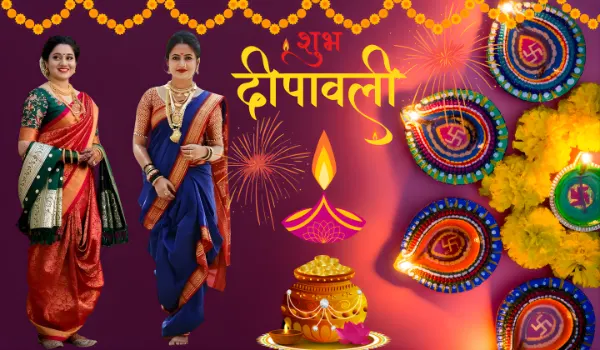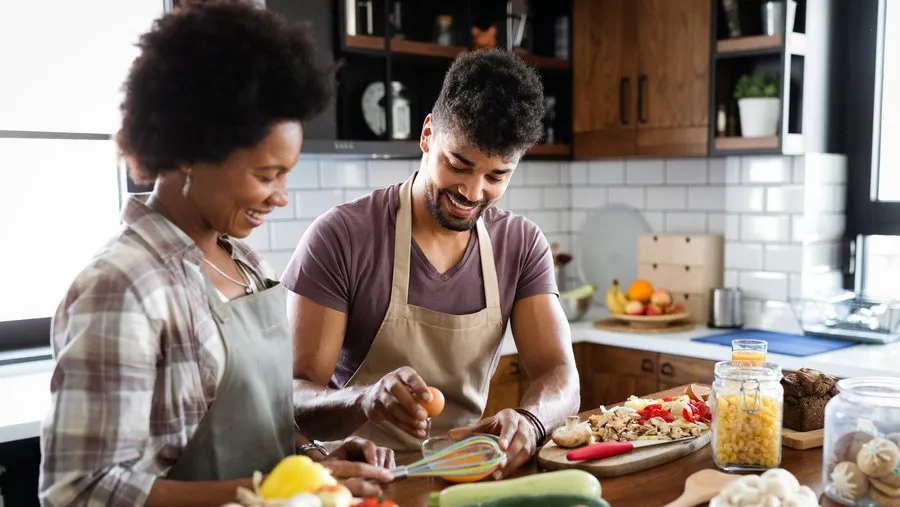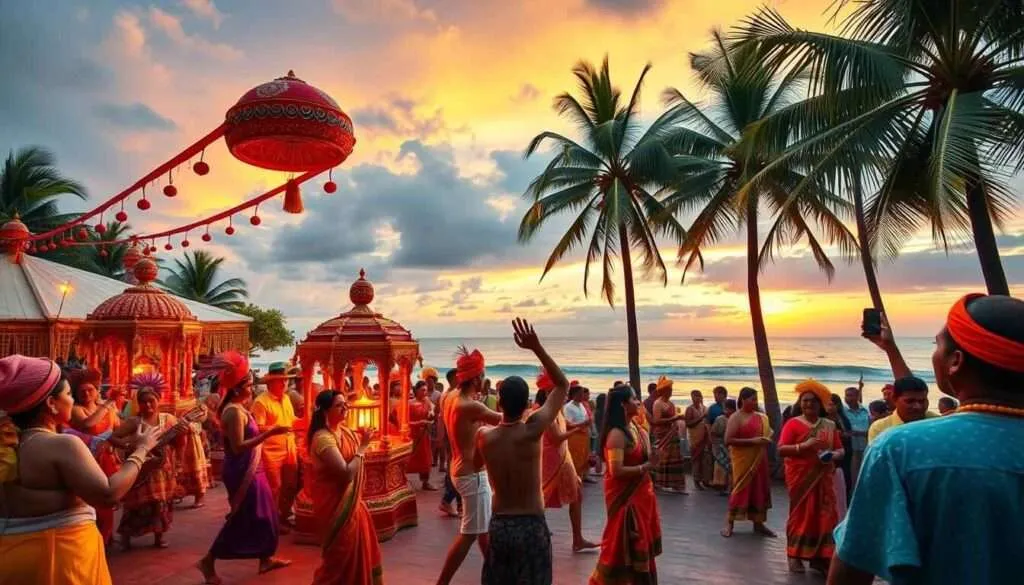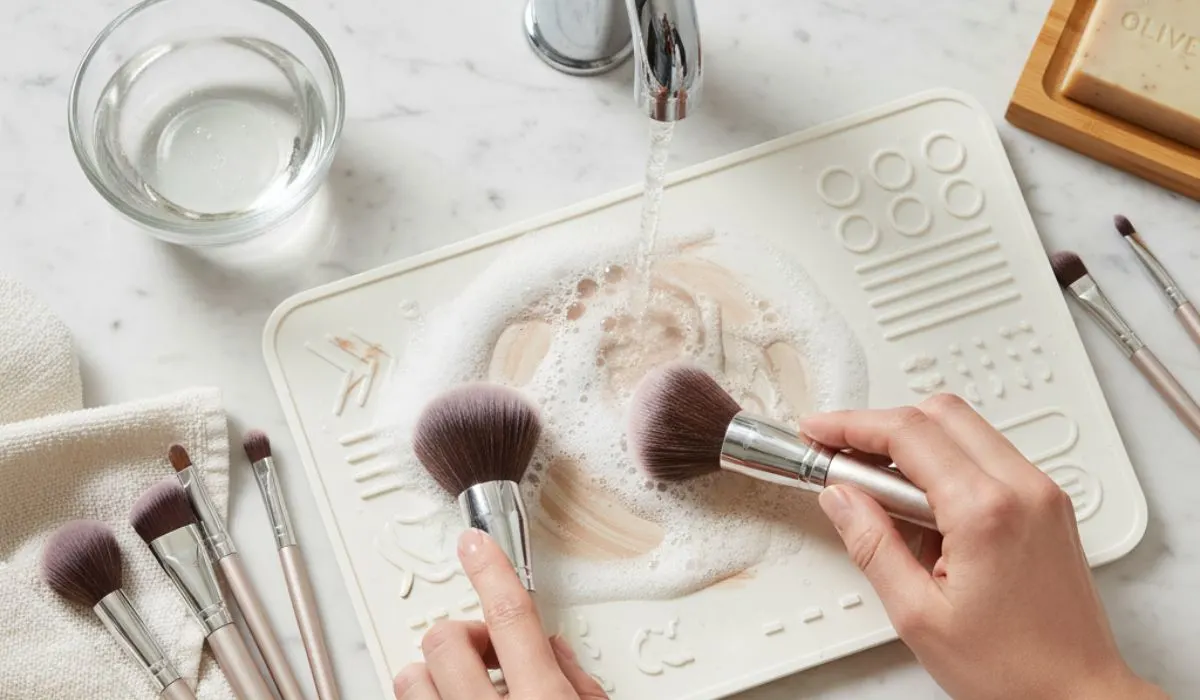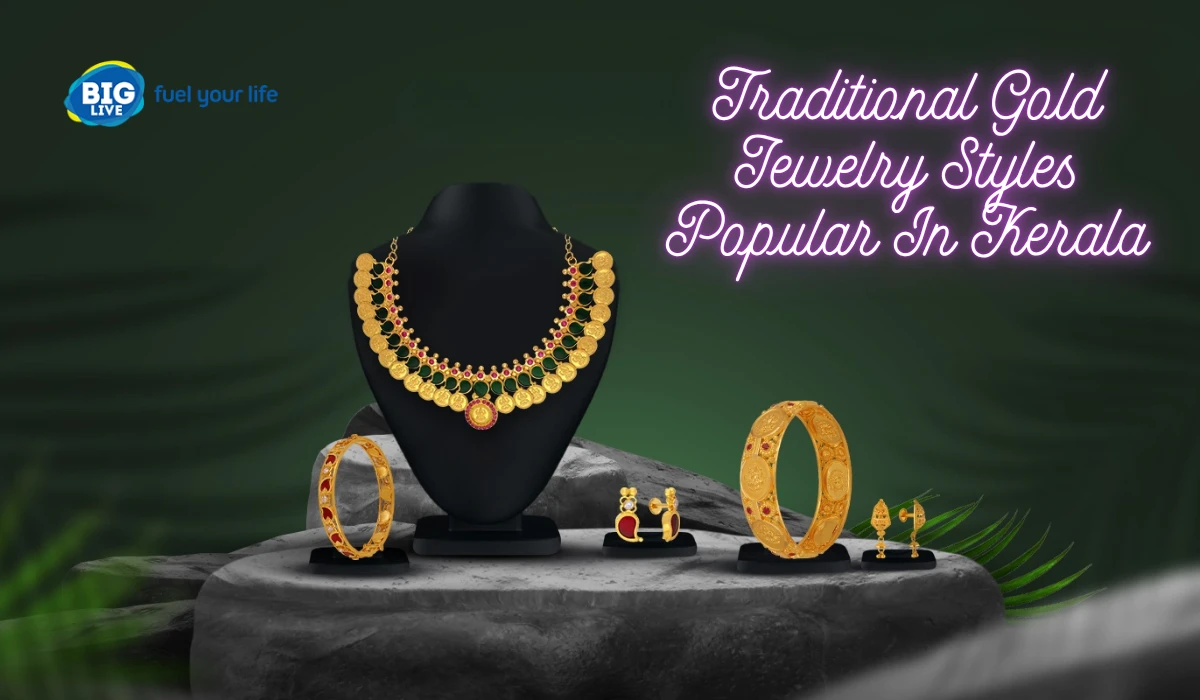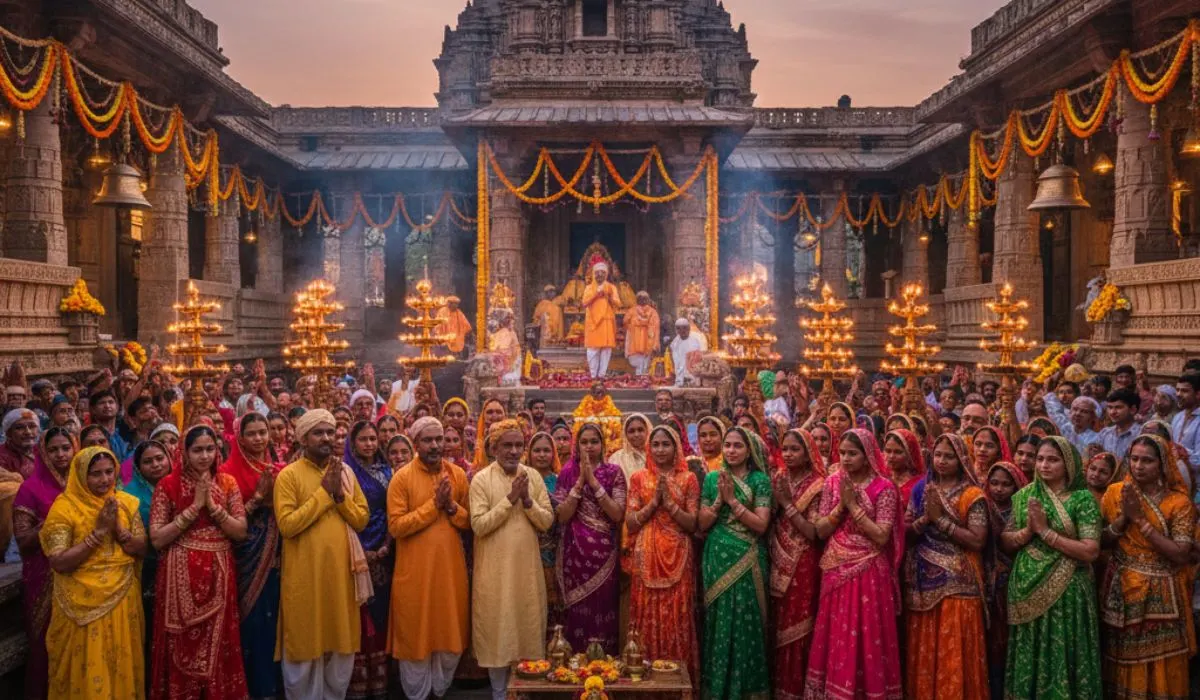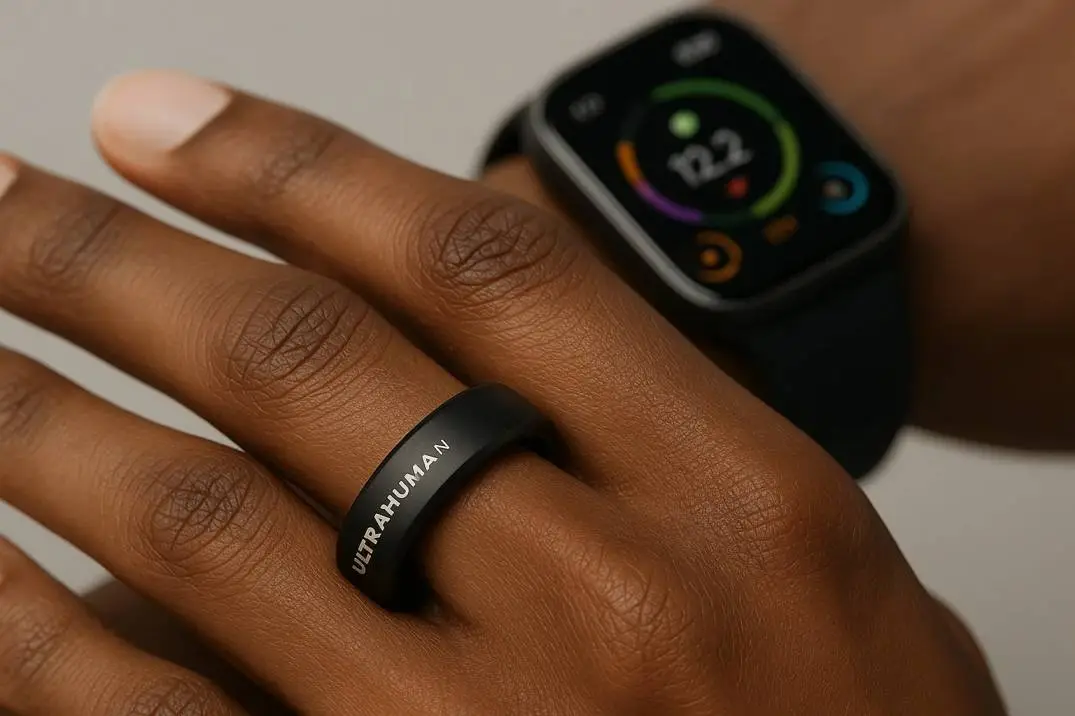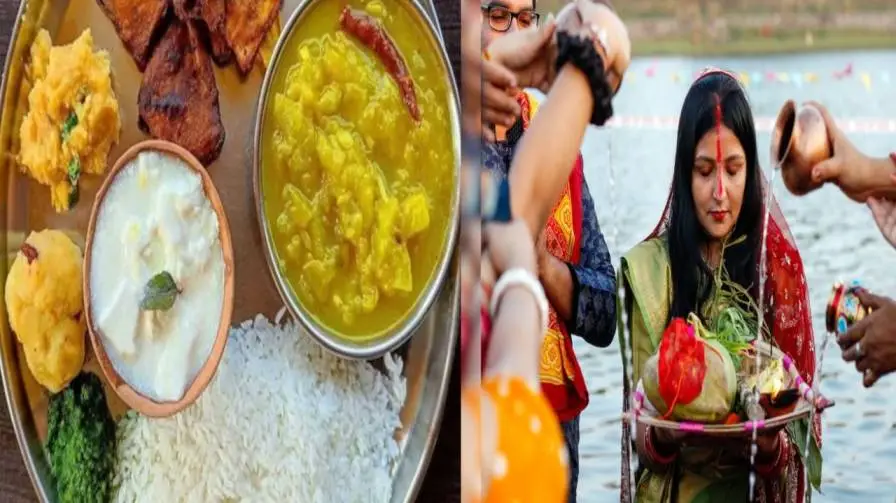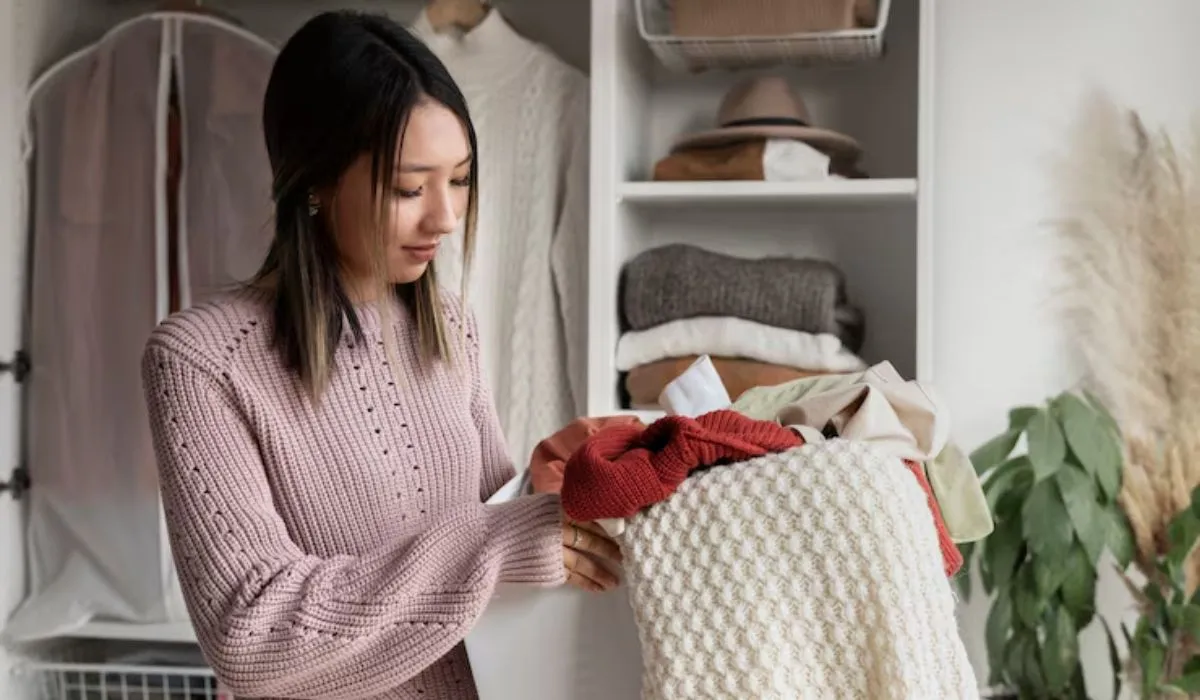Another significant element of the culture in Maharashtra is the festival of lights Diwali. As their houses shone with diyas and rangoli decorations on every doorstep, Maharashtrians take the advantage of their rich-sartorial culture and celebrate their cultural pride by wearing the old fashioned clothes. The occasion would be even more significant when families put on their best traditional attire observing traditions and developing unforgettable memories.
Women's Traditional Attire
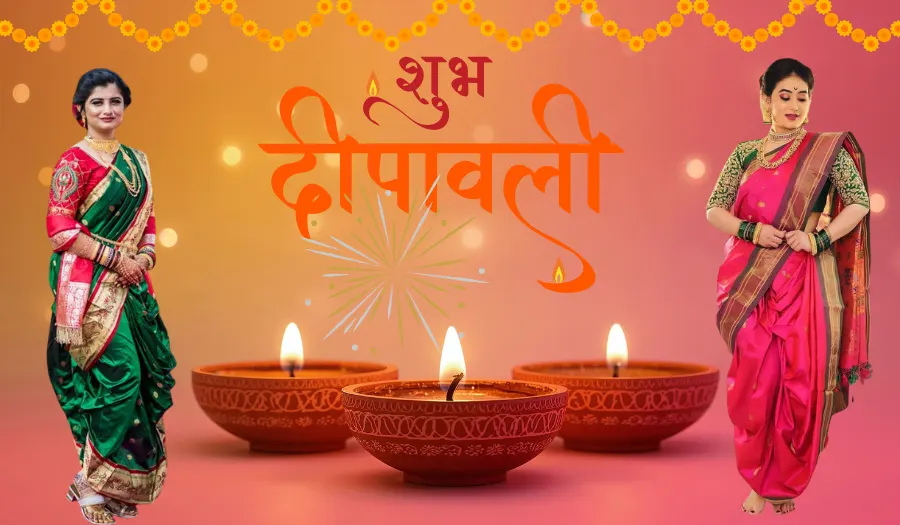
The Nauvari Saree
The Nauvari saree (nine-yard saree) is the pride of place and the Maharashtrian female wear. As a contrast to the traditional six yards long saree, the Nauvari is worn in a unique manner that does not need a petticoat with the pleats gathered at the back side giving it the dhoti effect. This form of clothing is called Kashta saree and because of this, it is easy to wear and symbolises the warrior spirit of Maharashtrian women.
In the case of Diwali, women tend to wear Nauvaris that have dazzling colour, such as dark green, royal blue, dark red, or traditional yellow. The saree is commonly designed of silk especially Paithani silk intricately woven in zari and the characteristic peacock and lotus patterns stuffed at the back.
Read also: How To Celebrate Diwali The Gujarati Way
Paithani Sarees
Maharashtra has a most treasured textile called the Paithani saree which should be mentioned specifically. These hand woven silk sarees are gold or silver zari embroidered and are originally of Paithan. The dissimilar border and pallu with the design in peacocks and parrots, lotuses and vines is the peculiar feature. Paithani silk saree of jewelled colour as well as the combination of conventional gold jewellery gives a memorable outfit to wear on the Diwali festivities.
Lugade
The Lugade, a six-yard saree draped in a more simple manner, is often seen by younger ladies and girls. Silk lugades with golden borders and vibrant hues are popular options for Diwali since they are elegant and warm.
Jewelry and Accessories
No Maharashtrian outfit is complete without the right jewelry:
- Nath (nose ring): A large, ornate nose ring, often connected to the hair with chains
- Kolhapuri saaj: A distinctive necklace with intricate gold work
- Thushi: A simple gold necklace that sits close to the neck
- Bugadi or Jhumkas: Traditional earrings in various designs
- Bangles: Green glass bangles paired with gold bangles create the quintessential look
- Mundavalya: Traditional forehead ornament with pearl strings
- Gajra: Fresh jasmine flowers woven into the hair bun
Fresh mogra (jasmine) flowers are usually used to make up hair in a traditional bun (juda or ambada), and the look is finished with a kumkum (vermillion) bindi.
Men's Traditional Attire
Dhoti-Kurta
Maharashtrian men wear draped clothes that are the basis of their attire combining dhoti and kurta. A dhoti is a long, free garment that covers the hips and reaches the legs, and it is typically worn with a kurta (long shirt). Men typically wear white, cream, or cool-colored silk or fine-cotton dhotis during Diwali, along with kurtas that are typically embroidered or feature fancy buttons.
Kurta-Pajama with Nehru Jacket
A more modern yet timeless option is the kurta pajama paired with a Nehru jacket or waistcoat. The jacket emits strength when it is made of finest fabrics like silk or brocade in deep maroon, gold, or navy blue.
Pheta (Pagdi)
The Maharashtrian attire of a man is already complete with the Pheta otherwise known as Pagdi, a traditional turban. Turbans are adorned in numerous colours and designs; the most widely available one is the Puneri Pagdi of Pune; they are available in red, saffron, or pink. The turban is usually fastened with a decorative brooch or jewelled pin referred to as a jodvi.
Accessories
Men often wear a shela (stole) thrown over their shoulders, classic mojari or shoe chappals for shoes, and bangles (waist belts).
Read also: Modern Karwa Chauth Festivities in Maharashtra
Children's Traditional Wear
Children dressed in miniature copies of adult clothing seem charming. Boys dress in dhoti-kurtas with vibrant phetas, while girls wear choli-lugade sets or prepared Nauvari-style dresses with matching jewelry sets. Many families coordinate colors to create a unified, festive appearance in family photographs.
Regional Variations
The many areas of Maharashtra each have their own distinct styles for traditional clothing. The rich tapestry of Mumbai fashion is made better by Puneri Pagdis, Kolhapuri footwear and jewelry, and the many draping techniques of other groups.
Modern Adaptations
Modern Maharashtrians achieve comfort and its combination with tradition though the traditional clothing remains rather popular. Already designed Nauvari sarees with stitchy pleats, hybrid kurtis, which have traditional designs, and light materials can give the younger generation the chance to respect their culture and at the same time feel cosy.
The Significance
The traditional clothing in Diwali is more than mere eye pleasing. It is a part of communicating with the ancestors, presenting cultural roots, and transferring traditions to the offspring generation. The bright colours also represent the joy and wealth brimming during the festival and the traditional figures are used as a reminder of the beauty of the Maharashtrian culture which is timeless.
You are planning to attend this Diwali, why not think of wearing these gorgeous traditional dresses? As you’re wearing either a gorgeous Paithani saree, or a dhoti-kurta, any other traditional outfit, you will not only be walking in a magnificent mode but also a tradition that has been providing a glamour to the Maharashtrian families since times immemorial.



